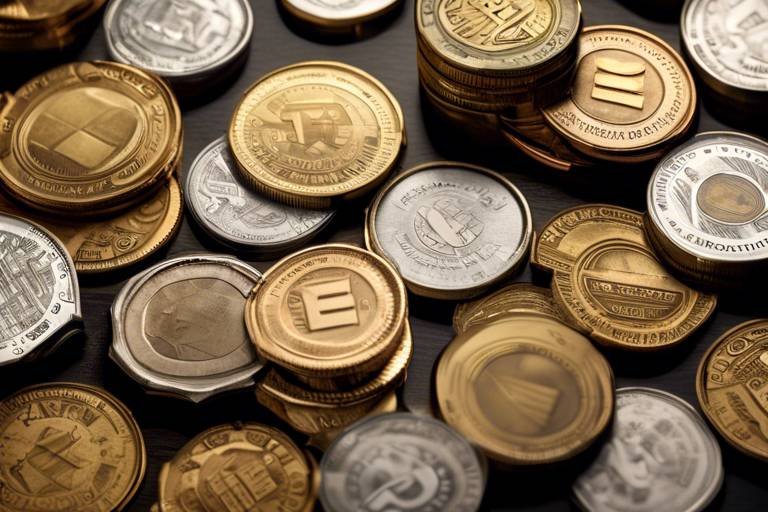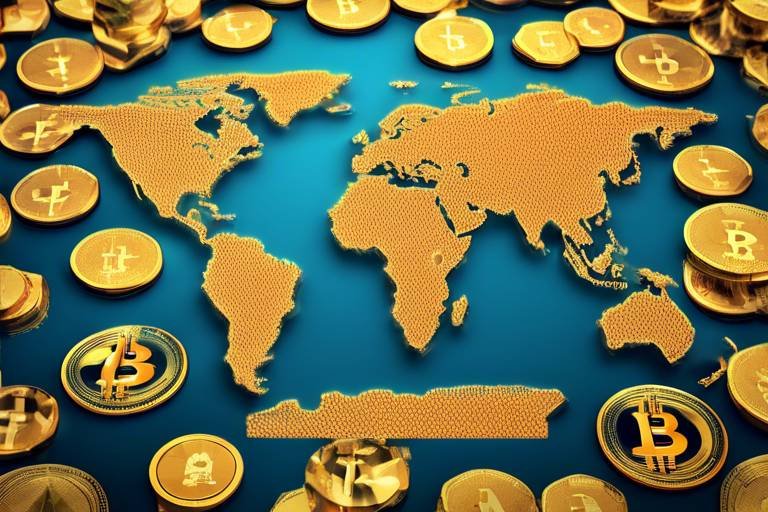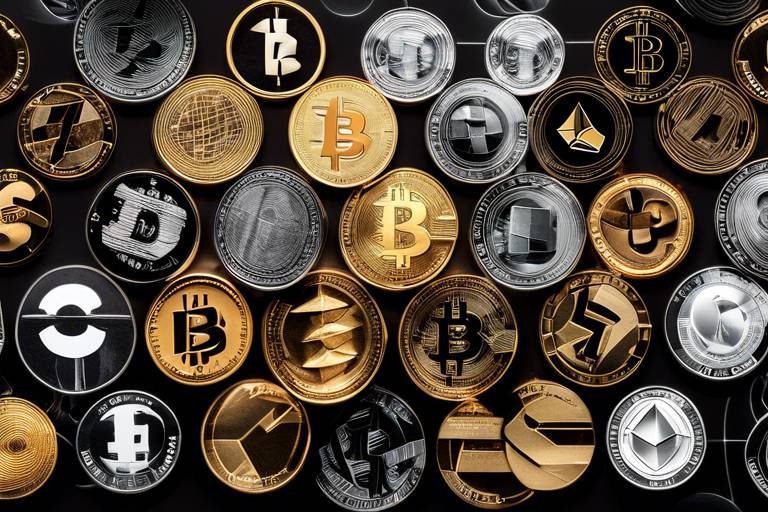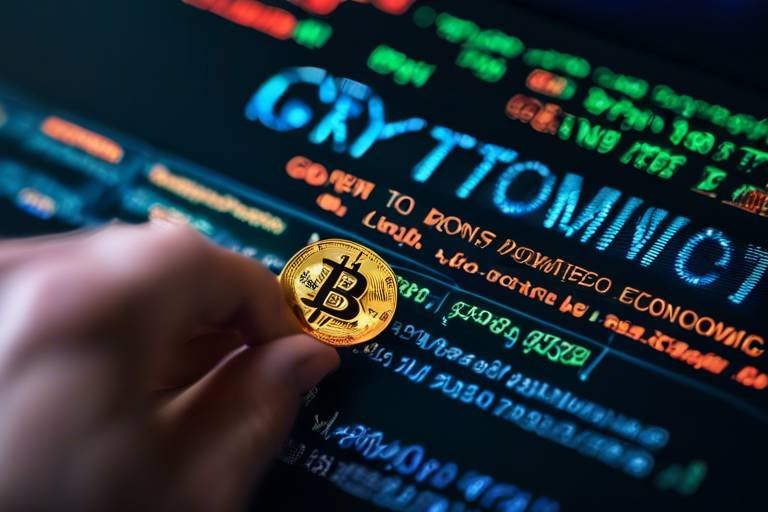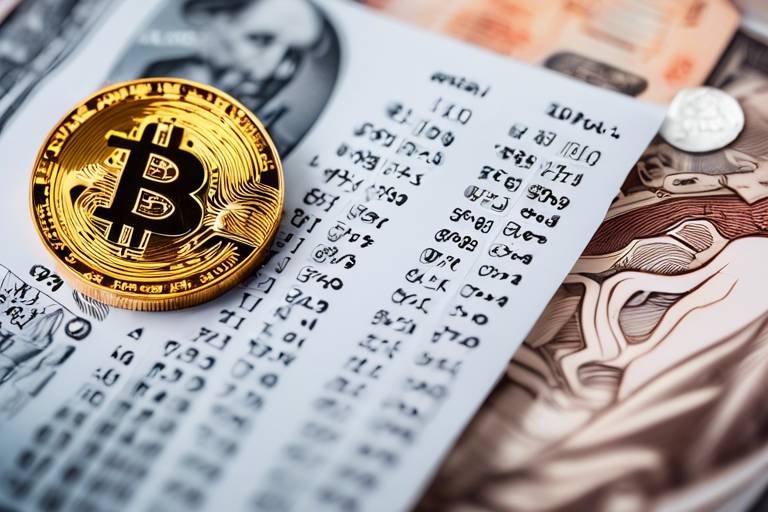How Token Standards Affect Market Dynamics
The world of cryptocurrencies is as dynamic as it is complex, and at the heart of this ecosystem lies the concept of token standards. But what exactly are token standards, and why do they hold such significance in shaping market behavior? In essence, token standards are the rules and protocols that govern how tokens are created, issued, and managed on a blockchain. They serve as the backbone of the entire cryptocurrency landscape, ensuring that different tokens can interact seamlessly within the ecosystem. Without these standards, the market would be a chaotic mess, akin to a world where everyone speaks a different language—communication and interoperability would be nearly impossible.
Understanding the nuances of various token standards is crucial for investors, developers, and even casual enthusiasts. Each standard comes with its own set of features, advantages, and limitations, influencing everything from trading practices to investor sentiment. For instance, the popular ERC-20 standard on Ethereum has paved the way for countless projects and Initial Coin Offerings (ICOs), while newer standards like ERC-721 and ERC-1155 are beginning to carve out their own niches, particularly in the realms of non-fungible tokens (NFTs) and multi-token functionalities.
As we delve deeper into the intricacies of these token standards, it becomes evident that they not only dictate the technical aspects of token creation but also play a pivotal role in shaping market dynamics. The adoption of a particular standard can lead to waves of innovation, attracting investors and developers alike, while limitations can stifle growth and lead to market volatility. So, how do these token standards truly impact the market? Let's explore the specifics.

Understanding Token Standards
Token standards are the backbone of the cryptocurrency ecosystem, defining the rules and protocols for creating and managing tokens on a blockchain. Think of them as the grammar of a language; without a common set of rules, communication becomes chaotic and ineffective. In the world of cryptocurrencies, these standards ensure that different tokens can interact seamlessly with each other and with various platforms, enhancing overall functionality and user experience.
At their core, token standards dictate how tokens are issued, transferred, and managed. This is crucial for developers and investors alike, as it establishes a framework that promotes interoperability and reduces friction in transactions. For instance, when a new token adheres to a widely accepted standard, it can easily be integrated into existing wallets and exchanges, making it more accessible to users. Imagine trying to fit a square peg into a round hole; if the token doesn't align with established standards, it may struggle to find its place in the market.
Moreover, token standards play a pivotal role in the development of decentralized applications (dApps) and Initial Coin Offerings (ICOs). By providing a clear set of guidelines, they enable developers to focus on innovation rather than reinventing the wheel. This not only accelerates the pace of development but also fosters a sense of trust among investors, who are more likely to engage with projects that follow recognized protocols. The significance of these standards cannot be overstated; they are the glue that holds the rapidly evolving cryptocurrency landscape together.
In summary, understanding token standards is essential for anyone looking to navigate the cryptocurrency space effectively. They provide a framework that enhances interoperability, simplifies development processes, and builds trust among users. As the market continues to evolve, staying informed about these standards will empower investors and developers to make better decisions, ensuring they remain at the forefront of this exciting digital revolution.

ERC-20: The Pioneer Standard
The ERC-20 token standard has emerged as a cornerstone of the Ethereum blockchain, serving as the blueprint for creating and managing tokens. Launched in 2015, this standard has facilitated an explosion of decentralized applications (dApps) and Initial Coin Offerings (ICOs), making it a vital player in the cryptocurrency landscape. But what exactly makes ERC-20 so special? Well, it’s all about the rules and protocols that define how tokens operate on the Ethereum network. These rules ensure that tokens can interact seamlessly with one another and with various applications, thus fostering a vibrant ecosystem.
One of the standout features of ERC-20 is its interoperability. Imagine a world where different tokens can communicate and transact without a hitch, much like how different apps on your smartphone work together. This interoperability is crucial for developers who want to create dApps that utilize multiple tokens. Moreover, it allows users to easily trade and exchange tokens across various platforms, enhancing liquidity and user experience. For instance, if you hold an ERC-20 token, you can store it in any compatible wallet, making it incredibly convenient.
Moreover, ERC-20 has played a pivotal role in the rise of ICOs. Before its introduction, fundraising for new projects was a cumbersome process filled with hurdles. However, with ERC-20, developers can launch their tokens quickly and efficiently, attracting a wave of investors eager to get in on the next big thing. This has led to a proliferation of projects, some of which have turned into household names in the crypto world. The ease of creating and managing these tokens has democratized access to capital, allowing innovative ideas to flourish.
However, it’s essential to recognize that the ERC-20 standard isn’t without its challenges. One of the primary limitations is scalability. As more users flock to the Ethereum network, the congestion can lead to slower transaction times and higher fees. This can be particularly frustrating for users who want to trade tokens quickly. Additionally, while ERC-20 tokens are widely accepted, not all platforms support them, which can limit their usability in certain scenarios. Developers must be aware of these limitations as they design their projects, ensuring that they are prepared to navigate the complexities of the network.
In summary, the ERC-20 token standard has revolutionized the way we think about tokens and blockchain technology. Its ability to facilitate interoperability, streamline ICO processes, and support a growing ecosystem of dApps has cemented its status as the pioneer standard in the crypto space. While there are challenges to overcome, the benefits it offers far outweigh the drawbacks, making it a fundamental component of the Ethereum landscape.
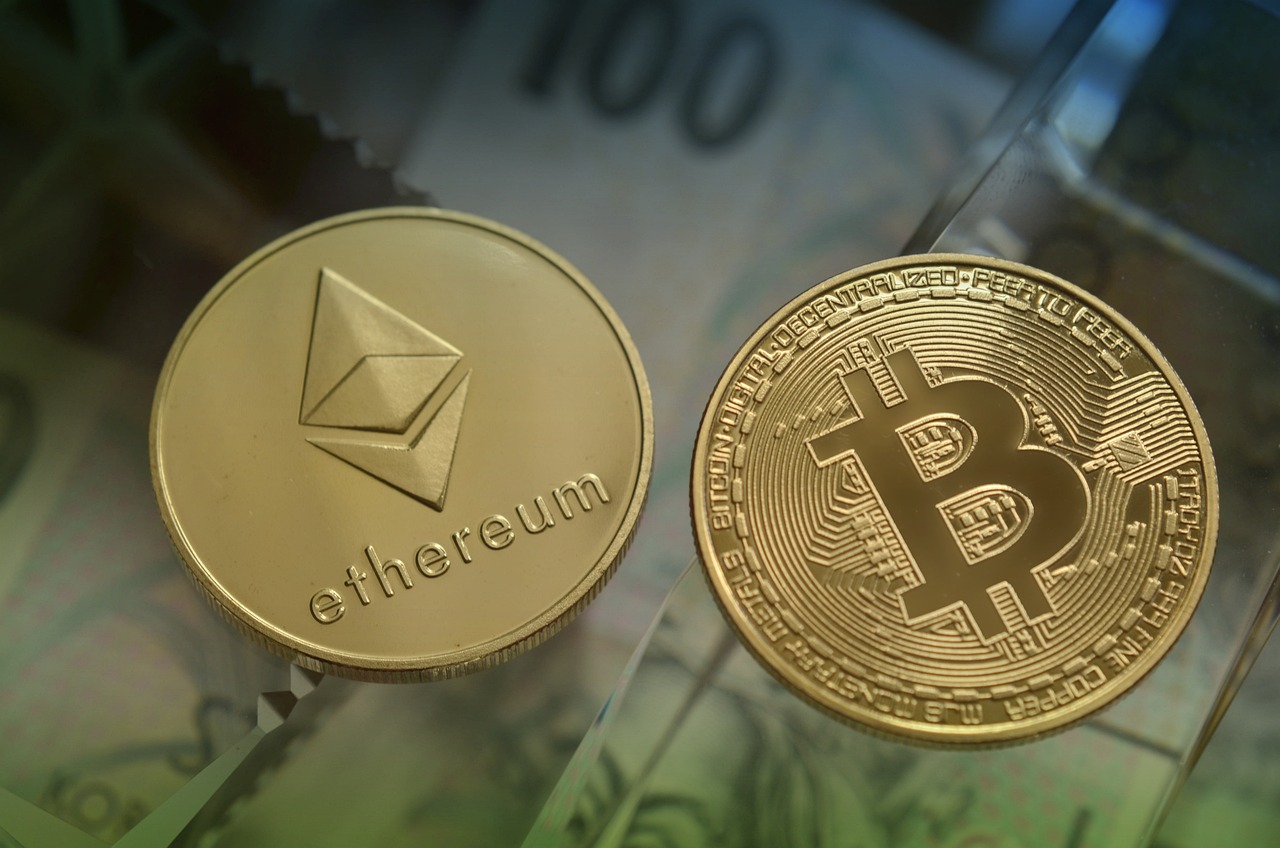
Benefits of ERC-20 Tokens
The ERC-20 token standard has become a cornerstone of the Ethereum blockchain, bringing with it a plethora of benefits that have significantly impacted the cryptocurrency landscape. One of the most notable advantages is the ease of integration. Developers can create and launch their tokens without the need for extensive coding knowledge. This democratization of token creation has led to an explosion of innovative projects, each vying for attention in a crowded market. Imagine being able to launch your own currency with just a few lines of code—this is the power of ERC-20!
Moreover, the widespread adoption of ERC-20 tokens means that they are supported by a vast array of wallets and exchanges. This interoperability not only enhances the user experience but also ensures that token holders can easily trade and manage their assets. For instance, if you hold an ERC-20 token, you can seamlessly transfer it between various wallets without worrying about compatibility issues. This feature is akin to how a universal charger works for multiple devices—it's convenient and time-saving.
Another key advantage of ERC-20 tokens is their role in facilitating Initial Coin Offerings (ICOs). The standardized framework allows startups to raise funds efficiently by issuing their own tokens, which investors can purchase in exchange for Ethereum or other cryptocurrencies. This streamlined process has attracted a diverse range of investors, from seasoned professionals to curious newcomers. The ICO boom of 2017 is a testament to how ERC-20 tokens can democratize investment opportunities, allowing anyone with a little Ethereum to participate in groundbreaking projects.
In addition to these benefits, ERC-20 tokens contribute to the overall growth of the Ethereum ecosystem. The more projects that utilize this standard, the more robust the network becomes. It's like a thriving city where each new building adds value to the community. As more developers create ERC-20 tokens, they enhance the functionality and appeal of the Ethereum blockchain, leading to greater adoption and investment.
However, it’s essential to recognize that the benefits of ERC-20 tokens come with certain responsibilities. Developers must ensure that their tokens adhere to the ERC-20 standard to maintain compatibility and security. This is where the community plays a crucial role, providing feedback and support to new projects. In this way, the ERC-20 standard not only fosters innovation but also cultivates a sense of community among developers and users alike.
In summary, the benefits of ERC-20 tokens are multifaceted, ranging from ease of integration and interoperability to their pivotal role in ICOs and the overall growth of the Ethereum ecosystem. As the crypto landscape continues to evolve, the ERC-20 standard will likely remain a vital component, shaping the future of digital assets.
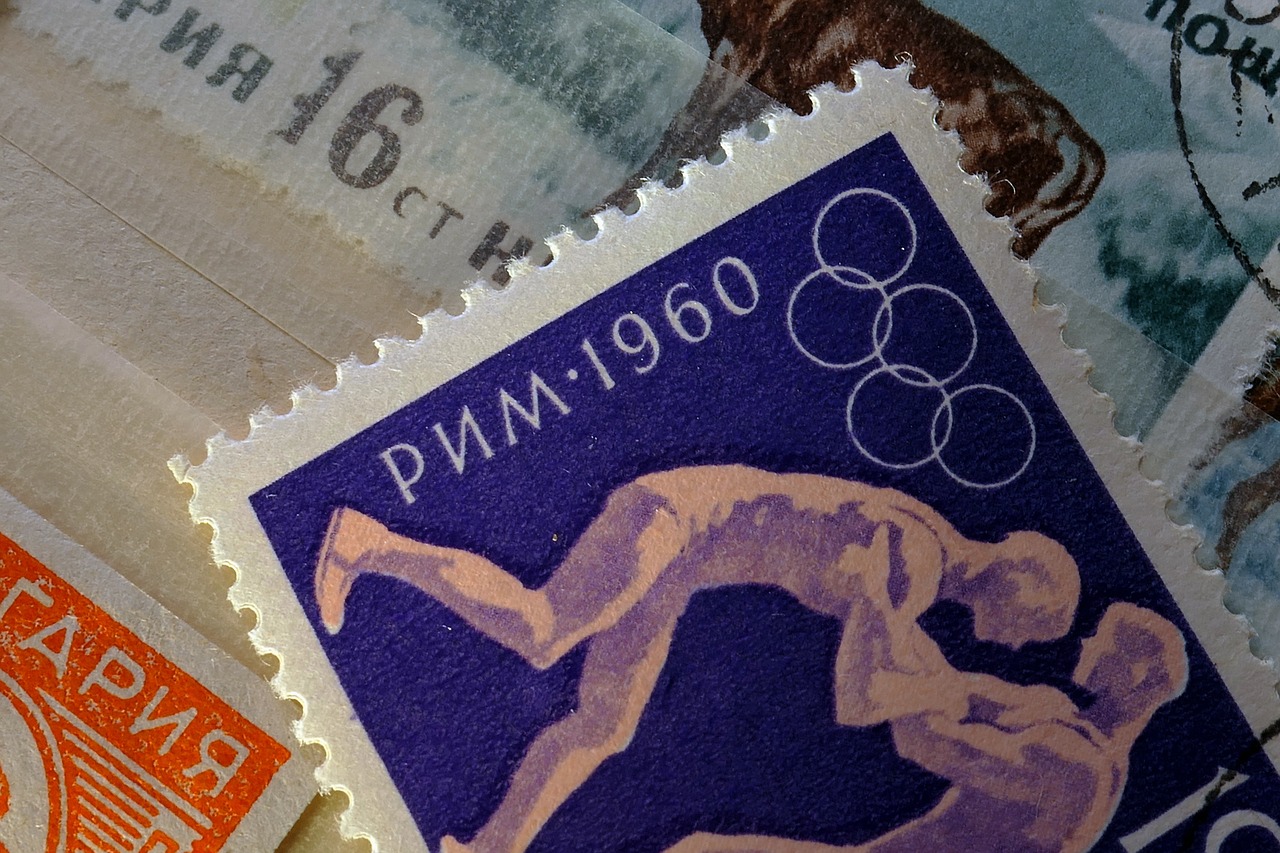
Interoperability with Wallets
When it comes to the world of cryptocurrencies, interoperability with wallets is a game-changer, especially for ERC-20 tokens. Imagine trying to use a special key that only fits one door; that's how many tokens operate without proper wallet compatibility. ERC-20 tokens, however, break down these barriers, allowing users to store, send, and receive their tokens across various wallets seamlessly. This flexibility enhances the user experience, making it easier for both seasoned traders and newcomers to navigate the crypto landscape.
So, why does this matter? Well, think of wallets as your digital bank accounts. If your bank only allowed you to interact with a specific type of currency, you’d be stuck, right? The same goes for cryptocurrency wallets. By supporting ERC-20 tokens, wallets like MetaMask, Trust Wallet, and Ledger provide a unified platform for users to manage multiple tokens without the hassle of switching between different wallets. This not only saves time but also reduces the risk of making mistakes during transactions.
Moreover, the wide adoption of ERC-20 tokens means that developers are motivated to ensure their wallets support these tokens. This creates a positive feedback loop: as more wallets integrate ERC-20 support, more users flock to these wallets, and consequently, more developers create ERC-20 tokens. It’s a vibrant ecosystem that benefits everyone involved. In fact, you could say that the interoperability of wallets is akin to a universal translator in a diverse world; it allows different tokens to communicate and interact effortlessly.
Let’s not forget the role of decentralized exchanges (DEXs) in this interoperability. DEXs enable users to trade ERC-20 tokens directly from their wallets, bypassing the need for centralized exchanges. This not only enhances security but also gives users complete control over their assets. Imagine being able to swap your tokens as easily as trading baseball cards with friends—no middleman, just direct exchanges. This level of accessibility encourages more trading activity, which in turn boosts market dynamics and liquidity.
In summary, the interoperability of ERC-20 tokens with various wallets is crucial for fostering a user-friendly environment in the cryptocurrency market. As more wallets embrace this standard, the potential for increased adoption and innovation grows exponentially. It’s like opening a floodgate of opportunities for both developers and users, paving the way for a more interconnected and efficient crypto ecosystem.

Impact on ICOs
The introduction of the ERC-20 token standard has significantly transformed the landscape of Initial Coin Offerings (ICOs). Before ERC-20, launching a new cryptocurrency project was a cumbersome process, often involving complex coding and a lack of standardization. With the emergence of this standard, developers found a streamlined approach to creating tokens that could be easily integrated into the Ethereum blockchain. This standardization has led to a surge in ICOs, as it has made it simpler for startups to raise funds by issuing their own tokens.
One of the most notable impacts of the ERC-20 standard is the reduction in entry barriers for new projects. Entrepreneurs can now focus on building their ideas without getting bogged down in the technicalities of token creation. This accessibility has attracted a flood of innovative projects, each vying for attention in a crowded market. As a result, investors are presented with a wider array of opportunities, which can lead to both excitement and uncertainty in the market.
Moreover, the ERC-20 standard has facilitated greater transparency and trust in the ICO process. Since all transactions and token distributions are recorded on the blockchain, investors can easily verify the legitimacy of a project. This transparency is crucial in a space that has been marred by scams and failed ventures. With ERC-20 tokens, potential investors can conduct due diligence more effectively, allowing them to make informed decisions about where to allocate their funds.
Another significant advantage is the ability to trade ERC-20 tokens on various decentralized exchanges (DEXs). This liquidity is vital for investors, as it allows them to enter and exit positions more freely. Unlike traditional fundraising methods, where funds might be locked up for extended periods, the ERC-20 standard enables a dynamic trading environment. Investors can buy, sell, or trade tokens almost instantaneously, which enhances market activity and can lead to price volatility, often driven by speculation.
However, it's essential to recognize that the boom in ICOs facilitated by ERC-20 tokens has also led to challenges. The sheer volume of new tokens entering the market has made it increasingly difficult for investors to discern which projects are genuinely innovative and which are merely riding the wave of hype. As a result, the market has seen its fair share of pump-and-dump schemes and projects that fail to deliver on their promises. This creates a need for careful research and due diligence among investors, as the risk of loss is ever-present.
In summary, the ERC-20 token standard has had a profound impact on ICOs by simplifying the token creation process, enhancing transparency, and providing liquidity through trading. While this has opened the door for innovation and investment opportunities, it has also introduced challenges that require vigilance from investors. As the cryptocurrency landscape continues to evolve, the implications of these token standards will undoubtedly shape the future of fundraising in the digital age.
- What is an ICO? An Initial Coin Offering (ICO) is a fundraising method used by cryptocurrency projects to raise capital by selling their tokens to investors.
- How does the ERC-20 standard work? The ERC-20 standard outlines a set of rules and protocols for creating and managing tokens on the Ethereum blockchain, ensuring interoperability and ease of use.
- What are the risks associated with investing in ICOs? Risks include the potential for scams, lack of regulation, and the volatility of token prices. It's essential to conduct thorough research before investing.
- Can ERC-20 tokens be traded on exchanges? Yes, ERC-20 tokens can be traded on various decentralized and centralized exchanges, providing liquidity to investors.

Limitations of ERC-20 Tokens
While ERC-20 tokens have undeniably paved the way for innovation within the cryptocurrency space, they are not without their challenges. One of the most significant limitations is the issue of scalability. As the Ethereum network grows and more transactions flood in, the ability of the network to process these transactions efficiently is put to the test. This has led to instances of network congestion, where transactions can take longer to confirm and fees can skyrocket.
Speaking of fees, the transaction costs associated with ERC-20 tokens can be a real deterrent for both developers and users. During peak times, gas fees—essentially the cost of executing transactions on the Ethereum blockchain—can become prohibitively expensive. This creates a barrier for smaller investors and can stifle the growth of projects that rely on ERC-20 tokens. The high costs can also discourage everyday users from engaging with decentralized applications, limiting the overall adoption of the technology.
Another limitation lies in the lack of native support for complex functionalities. ERC-20 tokens are designed for fungibility, meaning each token is interchangeable with another of the same type. However, this fungibility restricts the ability to create more complex token behaviors that might be beneficial for specific use cases. For instance, if a project requires unique token functionalities, such as voting rights or specific ownership rights, developers often find themselves needing to create custom solutions, which can be time-consuming and costly.
Moreover, the ERC-20 standard does not inherently support token recovery. If a user accidentally sends their tokens to the wrong address, there is no built-in mechanism to retrieve them. This lack of safety can lead to significant losses, especially for those who are new to cryptocurrency and may not fully understand the intricacies of blockchain transactions.
Lastly, the security vulnerabilities associated with smart contracts can pose a risk for ERC-20 tokens. While the Ethereum network itself is robust, poorly written smart contracts can lead to exploits and hacks. This has been evidenced by several high-profile incidents where projects have lost millions due to vulnerabilities in their ERC-20 token contracts. Developers must exercise caution and conduct thorough audits to mitigate these risks, but even then, the threat remains.
In summary, while ERC-20 tokens have revolutionized the way we view and utilize digital assets, their limitations cannot be ignored. From scalability issues and high transaction costs to security vulnerabilities and the lack of complex functionalities, these challenges highlight the need for continuous evolution in the token standards landscape. As the cryptocurrency ecosystem matures, addressing these limitations will be crucial for fostering greater adoption and innovation.
- What are ERC-20 tokens? ERC-20 tokens are a type of digital asset created on the Ethereum blockchain, following a specific set of rules that allow them to interact with other tokens and decentralized applications.
- Why are ERC-20 tokens popular? Their popularity stems from their ease of use, compatibility with various wallets, and the ability to facilitate fundraising through Initial Coin Offerings (ICOs).
- What are the main limitations of ERC-20 tokens? Key limitations include scalability issues, high transaction costs, lack of complex functionalities, token recovery challenges, and potential security vulnerabilities in smart contracts.
- Are there alternatives to ERC-20 tokens? Yes, emerging standards like ERC-721 for non-fungible tokens and ERC-1155 for multi-token contracts offer solutions to some of the limitations faced by ERC-20 tokens.

Emerging Token Standards
As the cryptocurrency landscape continues to evolve, new token standards are emerging to address the diverse needs of the market. These standards are not just technical specifications; they represent a shift in how digital assets are created, managed, and utilized across various platforms. While the ERC-20 standard laid the groundwork for fungible tokens, newer standards like ERC-721 and ERC-1155 are redefining the rules of engagement in the blockchain space. They bring unique features that cater to specific applications, such as non-fungible tokens (NFTs) and multi-token functionalities, opening up a world of possibilities for developers and users alike.
One of the most significant advancements is the introduction of ERC-721, which allows for the creation of unique digital assets, commonly known as NFTs. Unlike traditional tokens that are interchangeable, each NFT has its own distinct value and characteristics. This uniqueness has sparked a revolution in sectors like art, gaming, and collectibles. For instance, artists can tokenize their work, ensuring provenance and ownership in a way that was previously impossible. The gaming industry is also embracing NFTs, allowing players to own in-game assets that hold real-world value. Imagine owning a rare sword in a game that you can sell or trade—this is the reality that ERC-721 brings to life.
On the other hand, the ERC-1155 standard takes things a step further by allowing developers to create multiple token types within a single contract. This multi-token capability is a game-changer, significantly reducing gas fees and simplifying the transaction process. Developers can manage different assets—both fungible and non-fungible—more efficiently, which is particularly beneficial for projects that require a variety of token types. For example, a gaming platform can issue ERC-1155 tokens for in-game currency, weapons, and skins all under one contract, streamlining operations and enhancing user experience.
The impact of these emerging standards on market dynamics is profound. They not only influence how tokens are perceived but also affect trading practices and investor sentiment. With the rise of NFTs, we see a shift in how value is assigned to digital assets. No longer are assets valued solely based on their utility; uniqueness and scarcity play a significant role. This shift has led to a surge in interest from both investors and creators, driving new projects and innovations. As more people enter the space, the potential for growth and expansion becomes limitless.
However, with great innovation comes challenges. The introduction of new token standards necessitates education and adaptation from both developers and users. The market must grapple with regulatory considerations, security concerns, and the need for interoperability among different token standards. As we navigate this exciting landscape, it’s crucial to stay informed about the implications of these changes. The future of cryptocurrency is not just about the tokens themselves but also about how they interact with each other and the broader financial ecosystem.
- What are token standards? Token standards are protocols that define how tokens are created, managed, and interacted with on a blockchain.
- Why are ERC-721 and ERC-1155 important? They introduce unique functionalities such as non-fungibility and multi-token capabilities, enhancing the versatility of digital assets.
- How do NFTs differ from traditional tokens? NFTs are unique and cannot be exchanged on a one-to-one basis, while traditional tokens (like ERC-20) are fungible and interchangeable.
- What challenges do emerging token standards face? They must overcome issues related to security, regulatory compliance, and the need for interoperability.

ERC-721: Non-Fungible Tokens (NFTs)
The introduction of ERC-721 has been a game-changer in the world of digital assets. Unlike traditional tokens that are fungible—meaning each unit is interchangeable with another—ERC-721 tokens are unique. Think of them as digital collectibles, where each token has distinct properties and value. This uniqueness has paved the way for a new era in various sectors, especially in art and gaming, where the concept of ownership is being redefined.
Imagine owning a one-of-a-kind piece of digital art or a rare in-game item that no one else can replicate. This is the magic of non-fungible tokens (NFTs). Each ERC-721 token is linked to a specific digital item, whether it's an artwork, a music album, or even a virtual real estate property in a metaverse. This has sparked a tremendous interest among artists, gamers, and investors alike, as they see the potential for both creativity and profit.
One of the most significant impacts of ERC-721 tokens has been their ability to create scarcity. In a digital world where copying is easy, NFTs offer a way to establish genuine ownership. Artists can mint their work as an NFT, ensuring that their creations are not only recognized but also valued. This has led to a surge in platforms dedicated to the buying and selling of NFTs, such as OpenSea and Rarible, where collectors can trade these unique assets.
Moreover, the gaming industry has embraced ERC-721 tokens with open arms. Imagine playing a game where you can own a unique sword or a character skin that you can sell or trade with others. This is not just a fantasy; it’s happening right now! Games like Axie Infinity and CryptoKitties have demonstrated how players can earn real money by trading their in-game assets, thanks to the unique properties of NFTs.
However, with great innovation comes challenges. The rise of NFTs has also raised questions about copyright, ownership rights, and the environmental impact of blockchain technology. As more artists and developers enter the NFT space, it’s crucial to address these issues to ensure a sustainable and fair marketplace.
In summary, ERC-721 tokens have opened up a world of possibilities, allowing for the creation and trading of unique digital assets. As we move forward, it will be exciting to see how this technology continues to evolve and shape our understanding of ownership and value in the digital age.
- What are ERC-721 tokens?
ERC-721 tokens are a type of non-fungible token that represent unique digital assets on the blockchain. - How do NFTs differ from traditional cryptocurrencies?
Unlike cryptocurrencies that are fungible, NFTs are unique and cannot be exchanged on a one-to-one basis. - What can I use NFTs for?
NFTs can represent digital art, music, collectibles, in-game items, and much more. - Are NFTs environmentally friendly?
The environmental impact of NFTs is a topic of debate, as they rely on blockchain technology that can consume significant energy.

ERC-1155: Multi-Token Standard
The ERC-1155 standard marks a significant evolution in the way tokens are created and managed on the blockchain. Unlike its predecessor, ERC-20, which focuses on creating one type of token per contract, ERC-1155 allows developers to create multiple types of tokens within a single contract. This innovation not only simplifies the process for developers but also enhances the efficiency of transactions on the blockchain. Imagine trying to carry around a wallet filled with different cards for each type of currency; instead, ERC-1155 lets you consolidate them into one, making it far more convenient.
One of the most compelling advantages of ERC-1155 is its ability to significantly reduce gas fees. Gas fees can be a major hurdle for users, especially during peak network times when transaction costs skyrocket. By allowing multiple token types to be handled in a single transaction, ERC-1155 minimizes the number of transactions needed, ultimately leading to lower costs for users. This feature makes it particularly appealing for applications that require frequent transactions, such as gaming and digital collectibles.
In the gaming industry, for instance, players often engage with various assets like characters, skins, and items. Using ERC-1155, a game developer can create a single smart contract that manages all these different assets seamlessly. This not only simplifies the coding process but also enhances the user experience, as players can trade, buy, or sell multiple items in one go without the hassle of interacting with several contracts. It’s like having a Swiss Army knife instead of a toolbox filled with individual tools!
Furthermore, the versatility of ERC-1155 extends beyond gaming. It opens new avenues for digital art and collectibles, allowing artists and creators to tokenize their work in unique ways. For example, an artist could issue a limited number of unique pieces while also creating a larger batch of prints, all managed under the same contract. This flexibility enables greater creativity and innovation in how assets are represented and traded in the digital space.
To put it simply, the ERC-1155 standard not only enhances efficiency but also fosters a more vibrant ecosystem for developers and users alike. As the blockchain landscape continues to evolve, the adoption of such multi-token standards could very well shape the future of digital assets.
- What is the main advantage of ERC-1155 over ERC-20?
The main advantage of ERC-1155 is its ability to manage multiple token types within a single contract, which reduces gas fees and simplifies transactions. - Can ERC-1155 tokens be used in gaming?
Yes, ERC-1155 is particularly beneficial for gaming applications, as it allows for the creation and management of various in-game assets efficiently. - How does ERC-1155 improve user experience?
By consolidating multiple token types into one contract, users can perform transactions with greater ease and lower costs.
Frequently Asked Questions
- What are token standards?
Token standards are the rules and protocols that define how tokens are created, managed, and interact on a blockchain. They ensure that different tokens can work together seamlessly, enabling a smooth user experience across various platforms.
- Why is ERC-20 so popular?
ERC-20 is popular because it provides a simple and efficient framework for creating tokens on the Ethereum blockchain. Its widespread adoption has led to a robust ecosystem, making it easy for developers to launch new projects and for users to trade tokens.
- What are the benefits of using ERC-20 tokens?
ERC-20 tokens offer numerous benefits, including ease of integration with wallets and exchanges, a large community of developers and users, and the ability to participate in Initial Coin Offerings (ICOs), which can provide funding for innovative projects.
- What limitations do ERC-20 tokens have?
Despite their popularity, ERC-20 tokens face limitations such as scalability issues and high transaction fees during network congestion. These challenges can impact the performance and usability of applications built on the Ethereum network.
- What is the significance of ERC-721 tokens?
ERC-721 tokens introduced the concept of non-fungible tokens (NFTs), which represent unique digital assets. This standard has gained immense popularity in industries like art and gaming, allowing creators to tokenize their work and collectors to own exclusive items.
- How does ERC-1155 differ from ERC-20 and ERC-721?
ERC-1155 is a multi-token standard that allows for the creation of multiple types of tokens within a single contract. This reduces gas fees and simplifies transactions, making it more efficient for developers and users compared to ERC-20 and ERC-721.
- How do token standards affect market dynamics?
Token standards significantly influence market dynamics by shaping trading practices, investor sentiment, and the overall development of the crypto ecosystem. They determine how easily tokens can be traded, integrated, and utilized, impacting their value and adoption.

